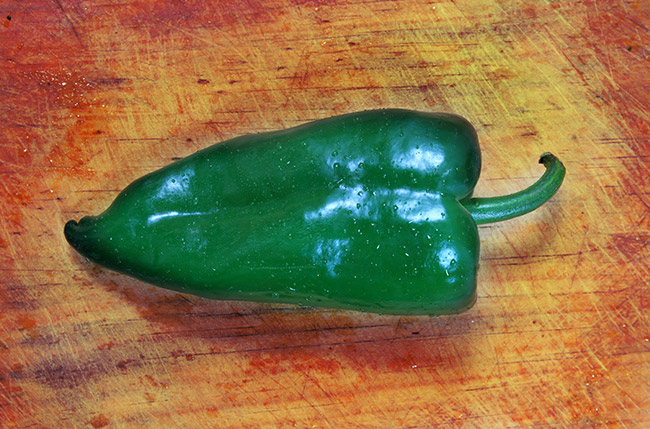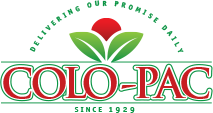
The Poblano pepper is a large, heart-shaped pepper, named for the central Mexican state of Puebla where it originated. In northern Mexico, the United States and Canada, the Poblano is also known as the pasilla, but elsewhere, pasilla typically refers to a dried chilaca pepper. Poblanos are often dried to increase their shelf life and a dried Poblano is called an ancho. In terms of heat, the Poblano is generally mild, but can be considerably hotter depending on its stage of maturity. As with most chile peppers, the Poblano is mildest while it is under-ripe, and hotter when it ripens. Unlike most other peppers, the Poblano does not turn red or orange when fully ripe, but stays green, although it turns a much darker green when it reaches its peak ripeness. On the Scoville scale, Poblanos most often range from 1-2,000 Scoville units. In rare cases, Poblanos have been known to be much hotter with no indication. The Poblano is often considered to be among the most flavorful mild peppers available, which has made it immensely popular in Mexico and North America. The chile is at its peak of flavor when it is nearly ripe or fully ripe. When the pepper is fully mature, its flavor profile becomes much more complex, gaining a rich, smoky, and, deep flavor.
Cooking Poblanos helps unlock the deep flavors of the pepper, so they are almost never used raw. One of the most popular uses of the Poblano is chile rellenos. Chile rellenos are made by breading, stuffing and frying a pepper. They are usually stuffed with various types of cheeses, and often meats and vegetables. Grilled or roasted Poblanos can be served by themselves as flavorful appetizers or sides. The pepper is often used in mole sauces, particularly in mole Poblano; a mole sauce that was developed in the Mexican state of Puebla. Poblanos can be used in any application that calls for Anaheim chiles. They are almost always skinned before use, as their skin is very tough and thick.
Fresh, ripe Poblanos will be deep green, with a waxy sheen, and smooth firm skin. When the skin becomes soft and mushy, the chile is no longer fresh and should not be used. The skin of the Poblano is very thick, and it is advisable to remove it before using the pepper. The easiest way to do this is to first grill or roast the pepper, and peel the skin off in the sink. When grilling the pepper, place it on a hot grill, and turn the pepper frequently. Grill until the pepper is blackened all around. Then, simply wash the peppers in the sink under running water and gently peel the skin off. If roasting, set the oven to broil, and place the peppers on a baking sheet. Once the skin of the pepper begins to crack and blister slightly, remove the peppers from the oven and wash the skin off in the sink. Removing the seeds is also a good idea with this pepper, because they can be fibrous and tough. To do this, cut off the cap of the pepper after grilling or roasting, and rinse out the seeds. Remember to always thoroughly wash your hands after working with hot peppers, because the oils in the pepper can cause serious irritation.


 BACK TO PRODUCTS
BACK TO PRODUCTS